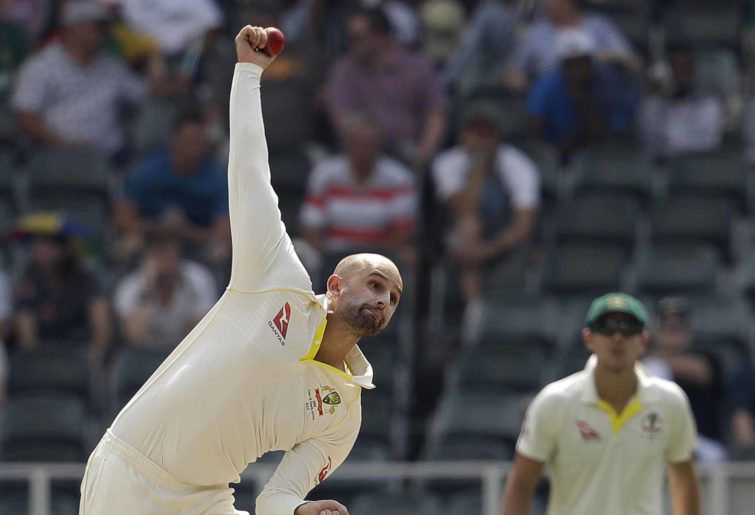Following India’s victory over Australia in the Border-Gavaskar Test series, I’m surprised that the focus is primarily on Australia’s batting order.
Looking at Australia’s scores, we have:
First Test: 235 and 291
Second Test: 326 and 243
Third Test: 151 and 261
Fourth Test: 300 and 0/6
Yes, the batting needs to be addressed. Australia needs to find a reliable top order. The incumbents need to learn to play ugly when the game demands that attitude. They need to find a resilient pair of openers.
All the great teams in history have had a great opening pair who’ve blunted the new ball and knocked some of the belligerence out of the attack.
But even with all that going on, and that 151 aside, they’re not terrible scores – and this is from a batting line-up that chopped, changed, misfired, and needed to be saved by the lower order. Obviously, Australia would’ve preferred scores of 500-plus, but these scores – again, that 151 aside – are competitive enough to have given them a chance.
What happened, though? Well, look at what India produced:
First Test: 250 and 307
Second Test: 283 and 140
Third Test: 443/7d and 106/8d
Fourth Test: 622/7d
Judging by the last two Tests Australia struggled to bowl India out. I’ll exempt the second innings of the third Test, as India were chasing quick runs and many of their batsmen contributed to their own downfalls with loose shots. Otherwise, Australia’s attack consistently failed to strike. Looking at the bowlers:
Patrick Cummins: 14 wickets at 27.78
Nathan Lyon: 21 wickets at 30.42
Josh Hazlewood: 13 wickets at 30.61
Mitchell Starc: 13 wickets at 34.53
Those are terrible figures for a strike attack.

(AP Photo/Themba Hadebe)
Test cricket dominance is about bowling. It’s become even more important in this age where the game is tailored to favour the batsman.
When Australia ruled cricket in the 1970s, it was on the backs of Dennis Lillee and Jeff Thompson. When the West Indies dominated cricket for over a decade, it was thanks to their four-pronged pace attack. When Australia rose up to become an unassailable force in the 1990s and 2000s, it was thanks to Glenn McGrath and Shane Warne (and Jason Gillespie, when he was in his prime).
A great bowler can appreciate the rest of the attack. A great pair of bowlers can strike terror in any opposition.
When Australia pounded the Windies in the 1975-76 Test series 5-1, West Indies captain Clive Lloyd didn’t go home obsessing about needing to improve the batting line-up. His thought process was that if Australia could maul them that way with two premier quicks (Lillee and Thompson), what could a side do with four?
That West Indies attack used to boast that it didn’t matter what their batsmen made, the bowling attack would bowl the opposition out for less. That was their attitude: they hunted because they were good enough to do that.
While the opposition was rightly in awe of batsmen like Viv Richards and Gordon Greenidge, they were terrified of the pace quartet.
In the early 90s, despite losing players of the calibre of Gordon Greenidge, Viv Richards and later Desmond Haynes and Richie Richardson, the Windies remained competitive thanks to the presence of Curtly Ambrose and Courtney Walsh. Once they went, that was it.
How fearfully was Glenn McGrath regarded for his unerring line? How frightening was Shane Warne? When India drew 1–1 with Australia in the 2003-4 Border/Gavaskar Trophy, and when England upset Australia 2–1 in the 2005 Ashes – and this is during a period Australia were dominating world cricket – it was due to McGrath and Warne missing matches or playing below their best because of injuries.
Now, none of this is to say that batting isn’t important. Of course it is. And the current Australian side does have issues that need to be addressed.
But the focus predominantly being on the batting is wrong. In this series, the batting line-up (as a whole) did enough to give Australia some chance. But the bowlers could not bowl to defend competitive scores. In the last two Tests, the bowlers were roundly obliterated.
If you look at the first ODI, how differently did that game unfold – and feel – because the bowling attack struck and looked potent? This is not to say Jason Behrendorff and Jhye Richardson should be selected for Test duties – it’s just a comparison of how much difference a potent bowling attack makes, and how different opposition look when they’re facing it.
As far as the Border-Gavaskar series went, the bowling attack let Australia down far more than the batting. The focus should be on the bowling. With the recent scandal of Sandpaper-gate, you can read into it what you like and Australia’s attack puttered away. This piece isn’t intended to look at supposition.
Maybe that’s why the focus hasn’t been there in the same way. But we’re left with a simple fact.
In its current incarnation, the Australian Test bowling attack is just not good enough, and in the Border-Gavaskar series, they let the side down far more than the batting.






























































































